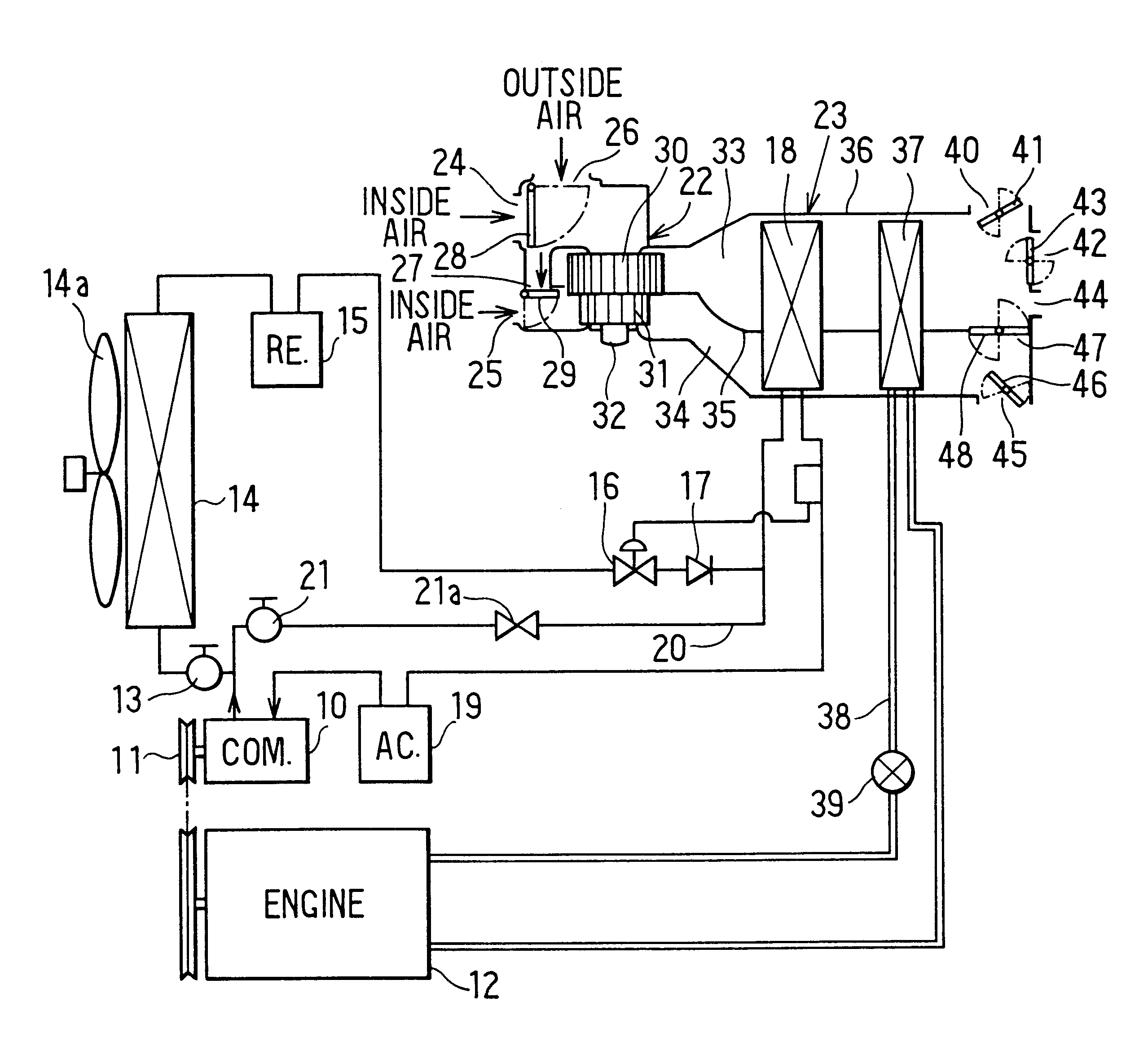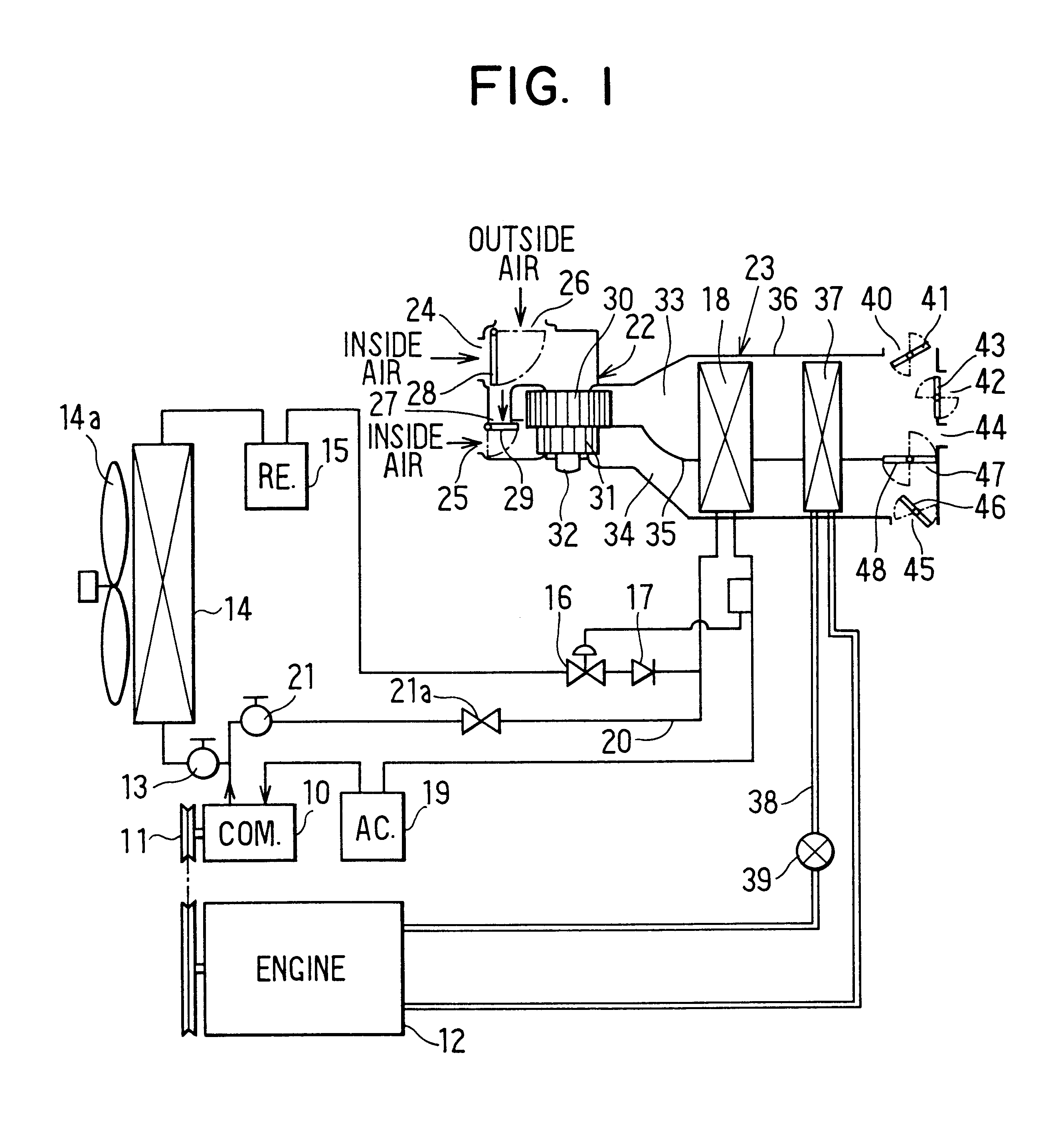Vehicle air conditioner
a technology for air conditioners and vehicles, applied in the field of vehicles, can solve the problems of windshield fogged, air having a high humidity and the temperature of air blown into the passenger compartment becomes lower
- Summary
- Abstract
- Description
- Claims
- Application Information
AI Technical Summary
Benefits of technology
Problems solved by technology
Method used
Image
Examples
Embodiment Construction
A preferred embodiment of the present invention will be described hereinafter with reference to the accompanying drawings. As shown in FIG. 1, a compressor 10 is driven by a vehicle engine 12 through an electromagnetic clutch 11. A refrigerant discharge side of the compressor 10 is connected to a condenser 14 through a first electromagnetic valve 13, and a refrigerant outlet side of the condenser 14 is connected to a receiver 15 in which liquid refrigerant is separated from gas refrigerant and is stored therein. Outside air outside the passenger compartment is blown toward the condenser 14 by an electrically driven cooling fan 14a. A refrigerant outlet side of the receiver 15 is connected to a thermal expansion valve 16, and a refrigerant outlet side of the thermal expansion valve (first press-reducing unit) 16 is connected to an evaporator 18 through a check valve 17. A refrigerant outlet side of the evaporator 18 is connected to a refrigerant suction side of the compressor 10 thro...
PUM
 Login to View More
Login to View More Abstract
Description
Claims
Application Information
 Login to View More
Login to View More - R&D
- Intellectual Property
- Life Sciences
- Materials
- Tech Scout
- Unparalleled Data Quality
- Higher Quality Content
- 60% Fewer Hallucinations
Browse by: Latest US Patents, China's latest patents, Technical Efficacy Thesaurus, Application Domain, Technology Topic, Popular Technical Reports.
© 2025 PatSnap. All rights reserved.Legal|Privacy policy|Modern Slavery Act Transparency Statement|Sitemap|About US| Contact US: help@patsnap.com



